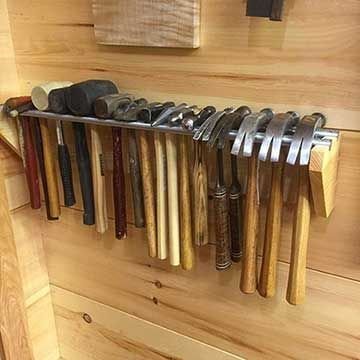Drawing an ellipse in woodworking can add a touch of elegance and sophistication to your projects. Whether you are a beginner or an experienced woodworker, mastering the art of drawing an ellipse opens up endless possibilities for enhancing your craftsmanship. In this article, we will delve into the basics of drawing an ellipse in woodworking, explore its importance and benefits, and provide you with a step-by-step guide on how to achieve accurate ellipses.
The importance of incorporating accurate ellipses in woodworking cannot be overstated. Ellipses can bring balance and symmetry to your projects, giving them a professional and polished look.
Whether you are designing furniture, creating decorative accents, or working on architectural elements, accurately drawn ellipses can make all the difference in elevating the overall aesthetic appeal of your pieces. Understanding how to properly draw an elliptical shape allows you to expand your creative horizon and create stunning designs that stand out from the ordinary.
To draw an ellipse in woodworking, you will need a set of essential tools and materials. From compasses and trammel points to jigs and templates, there are various options available depending on your preference and project requirements.
In the following sections of this article, we will provide you with a comprehensive guide on the necessary tools and materials needed for drawing an ellipse in woodworking. Additionally, we will walk you through a step-by-step process, where we’ll explore different techniques and methods for achieving precise ellipses.
Join us as we embark on a journey to discover the art of drawing an ellipse in woodworking. With careful attention to detail and practice, you’ll soon be able to create beautifully curved shapes that enhance your woodworking projects. Whether you are just starting out or looking to refine your skills further, this article has everything you need to understand the basics of drawing an ellipse in woodworking. So let’s dive in.
The Importance of Accurate Ellipses in Woodworking
Enhancing Aesthetics and Design
Accurate ellipses play a crucial role in enhancing the aesthetics and design of woodworking projects. Incorporating ellipses into furniture, cabinets, or even smaller decorative items can elevate the overall visual appeal of the piece. The smooth curves and symmetrical shape of an ellipse can add a sense of elegance and sophistication to any woodworking project. By mastering the art of drawing ellipses, woodworkers can create pieces that stand out and grab attention.
Creating Dimension and Depth
Another important benefit of incorporating accurate ellipses in woodworking is the ability to create dimension and depth. Unlike circles or squares, which tend to look flat, ellipses possess a more dynamic quality that adds visual interest to a piece.
By strategically placing ellipses within their designs, woodworkers can give the illusion of depth and dimension, making their work visually captivating. Whether it’s a curved tabletop with elliptical inlays or an elliptical cutout on a cabinet door, accurate ellipses can take woodworking projects from ordinary to extraordinary.
Adding Structural Stability
In addition to aesthetics, accurate ellipses also serve a functional purpose in woodworking – they provide structural stability. Elliptical shapes are inherently strong and rigid due to the absence of weak points such as corners or sharp angles.
Woodworkers often use perfectly drawn ellipses as templates for creating strong joints, supports, or framework within their projects. Whether it’s an elliptical dado joint or an oval-shaped base for a table, incorporating accurate ellipses ensures that the piece will not only look good but also maintain its integrity over time.
By understanding these benefits, woodworkers can appreciate how essential it is to master the skill of drawing accurate and precise ellipses in their craft. In the next section, we will delve into the essential tools and materials needed for drawing ellipses in woodworking.
Tools and Materials
Drawing an ellipse in woodworking requires specific tools and materials to ensure accuracy and precision. Having the right equipment is crucial in achieving professional-looking results. This section will provide a comprehensive guide on the essential tools and materials needed for drawing an ellipse in woodworking.
- Pencil or Marking Knife: A pencil or marking knife is necessary for marking the points and guidelines of the ellipse on the wood surface. Choose a high-quality pencil with a sharp point or a marking knife with a thin, pointed blade for precise markings.
- Ellipse Template or Trammel Points: An ellipse template or trammel points are invaluable tools for accurately drawing ellipses of different sizes. These tools allow you to select specific dimensions and easily trace out perfect ellipses without any guesswork.
- Flexible Curve Ruler: A flexible curve ruler is useful for creating irregular-shaped ellipses. It allows you to shape the curve into the desired form, ensuring that your ellipse matches your design requirements.
- Compass: A compass is another tool that can be used to draw an ellipse, especially if you prefer a more traditional approach. It consists of two arms-one holds a pencil, while the other pivots around a fixed point, allowing you to create ellipses of varying sizes.
- Clamps: Clamps are essential for securing your wood piece in place while drawing an ellipse. They ensure stability and prevent any unwanted movement during the process, enabling you to achieve accurate results.
- Quality Wood Surface: Choosing a high-quality wood surface is important when drawing an ellipse in woodworking as it affects both the appearance and durability of your project. Select a smooth, flat piece of wood that is appropriate for your desired finish.
By having these essential tools and materials readily available, you will be well-equipped to begin drawing ellipses in your woodworking projects. Remember to use them properly and take your time to ensure precise measurements and markings. With practice, you will become more confident in creating beautifully shaped ellipses that elevate the quality of your woodworking craftsmanship.
Step-by-Step Guide
Gather the Necessary Tools and Materials
Before diving into drawing an ellipse in woodworking, it’s important to gather the necessary tools and materials. Here is a list of essential items you will need:
- Compass: A compass is a vital tool for drawing ellipses accurately. Make sure to invest in a quality compass with a sturdy construction and adjustable arms.
- Pencils and Erasers: You will need a range of pencils with different lead thickness, such as HB and 2B, to draw guidelines and sketch out the ellipse shape. Having erasers handy is crucial for making corrections along the way.
- Measuring Tape or Ruler: To ensure precision and consistency in your ellipse, using a measuring tape or ruler is recommended when taking measurements and marking points.
- Woodworking Clamp: A woodworking clamp will keep your workpiece secure while drawing an ellipse, ensuring stability throughout the process.
Step 1: Determine the Major Axes
To start drawing an ellipse, you first need to determine the major axes-both horizontal (X-axis) and vertical (Y-axis). These axes represent the width and height of the desired ellipse.
Use your measuring tape or ruler to measure the width (‘A’) and height (‘B’) dimensions of your desired ellipse on your workpiece. Mark these measurements on both sides of the wood using a pencil or marker.
Step 2: Create Auxiliary Lines
Once you have marked the major axes on your workpiece, it’s time to create auxiliary lines that will help guide you in drawing the ellipse. These lines serve as reference points for plotting the shape accurately.
Using your compass, open it wider than half of ‘A’ (half-width) along one side of your workpiece. Keep one end of your compass fixed at this point while rotating it from side to side along both the major axes, creating an arc.
Next, repeat this process on the other side of your workpiece by opening your compass to half of ‘A’ along the opposite side. Again, create arcs along the major axes using the compass.
Step 3: Draw the Ellipse Curve
With the auxiliary lines in place, you are ready to draw the elliptical curve. Start at one end of the major axis and connect it to the corresponding point on the opposite side using light pencil strokes.
Continue drawing curves from all points along the major axis while gradually transitioning to meet points on either side of the minor axis. Take your time and use a gentle hand to ensure a smooth and even curve throughout.
Remember, practice makes perfect. Don’t be discouraged if you don’t achieve an ideal ellipse on your first attempt. With persistence and patience, you will gradually improve your skills in drawing ellipses in woodworking.
Now that you have successfully completed drawing an ellipse in woodworking, let’s explore different methods and techniques for choosing the right ellipse method for your project in the next section.
Choosing the Right Ellipse Method
When it comes to drawing an ellipse in woodworking, there are several different methods and techniques that can be used. Each method has its own advantages and considerations, and choosing the right one for your project is crucial in achieving the desired result. In this section, we will explore some of the most common methods for drawing an ellipse in woodworking and provide guidance on how to determine the most suitable one for your specific project.
One of the simplest methods for drawing an ellipse is using a pair of pins or nails as a guide. This method involves placing two pins or nails at the foci points of the ellipse and then tying a string around them.
By pulling the string taut with a pencil attached to it, you can trace out a perfect ellipse. This method is easy to understand and requires minimal tools, making it suitable for beginners or those who prefer a straightforward approach.
Another commonly used method is utilizing an adjustable ellipse template or jig. These templates consist of two perpendicular arms connected by a pivot point, allowing you to easily adjust the length and angle of the arms to create ellipses of different sizes and shapes. Adjustable ellipse templates are available commercially or can be homemade using simple woodworking tools. This method provides greater flexibility in creating ellipses with varying dimensions, making it ideal for projects that require precise measurements.
Lastly, modern technology offers another option for drawing an ellipse in woodworking – using computer-aided design (CAD) software or specialized applications. CAD software allows woodworkers to create precise ellipses digitally by inputting specific measurements and angles. These digital models can then be used as references for cutting or shaping wood pieces accurately. While this method requires some technical knowledge and access to appropriate software, it provides unparalleled precision and control over the final result.
In determining the most suitable method for your project, consider factors such as your skill level, available tools and materials, desired outcome, and personal preferences. Experimenting with different methods may be necessary to find the one that suits your needs best. Remember, practice makes perfect, and mastering the art of drawing an ellipse in woodworking takes time and patience.
Common Mistakes to Avoid
When drawing an ellipse in woodworking, there are several common mistakes that beginners often make. Being aware of these errors and knowing how to overcome them can greatly improve the quality and accuracy of your ellipses. Here is a list of common mistakes to watch out for and tips on how to avoid them:
- Unequal proportions: One of the most common mistakes when drawing an ellipse is creating unequal proportions between the height and width of the shape. This can result in an ellipse that appears stretched or squished. To avoid this, it is important to measure and mark equal distances from the center point along both the major and minor axes. Using a compass or elliptical jig can help ensure accurate measurements.
- Inconsistent curves: Another mistake that beginners often make is creating inconsistent curves when drawing an ellipse. This can happen when the hand movements are not smooth and fluid or when using improper techniques. To achieve consistent curves, try using your whole arm rather than just your wrist when drawing, as this allows for smoother motions. It may also be helpful to practice on scrap wood before attempting to draw an ellipse on your project piece.
- Overcompensating for minor axis length: When determining the length of the minor axis for your ellipse, it can be easy to overcompensate by making it longer than necessary, resulting in a distorted shape. To avoid this mistake, carefully measure and mark the correct length for the minor axis based on your desired dimensions before drawing the ellipse.
| Mistake | Tip |
|---|---|
| Unequal proportions | Measure and mark equal distances from the center point along both axes. |
| Inconsistent curves | Use your whole arm for smoother, more fluid motions when drawing. |
| Overcompensating for minor axis length | Carefully measure and mark the correct length before drawing the ellipse. |
By being aware of these common mistakes and following these tips, you can improve your ellipses in woodworking and achieve more accurate and visually pleasing results. Practice is key, so don’t be discouraged if your first attempts are not perfect. With time and experience, you will become more skilled at drawing ellipses and enhancing your woodworking projects with this versatile shape.
Advanced Techniques
Advanced Techniques: Exploring advanced techniques and tips for drawing complex ellipses in woodworking, including creating irregular shapes and incorporating ellipses into curved surfaces
Drawing basic ellipses is an essential skill in woodworking, but for those looking to take their craftsmanship to the next level, mastering advanced techniques for drawing complex ellipses can bring new dimensions and creativity to their projects. In this section, we will explore some advanced techniques and provide useful tips for creating irregular shapes and incorporating ellipses into curved surfaces.
To create irregular shapes using ellipses, one technique involves combining multiple smaller ellipses of varying sizes and orientations. By strategically overlapping these ellipses, woodworkers can achieve unique irregular shapes that add visual interest to their projects. This technique requires careful planning and a keen eye for aesthetics.
Start by sketching the desired shape on your wood surface, then break it down into smaller sections where individual ellipses can be drawn. Use a compass or an ellipse template to draw each ellipse accurately. Pay attention to the orientation and size of each ellipse to create a harmonious overall shape.
Incorporating ellipses into curved surfaces requires precision and attention to detail. When dealing with rounded or curved surfaces such as arched doorways or curved chair legs, tracing a single ellipse may not suffice. Instead, woodworkers need to adapt their approach by adjusting the shape of the ellipse as it conforms to the curve of the surface.
To achieve this, consider using flexible curve rulers or bendable templates that can be shaped according to the desired curve. Carefully draw multiple partially overlapped ellipses along the curve, gradually transitioning from one size or orientation to another as necessary. This technique allows for a seamless integration of ellipses into the curvature of your woodworking project.
By mastering these advanced techniques for drawing complex ellipses in woodworking, woodworkers can truly elevate their craftsmanship endeavors and create pieces that stand out. Practice these techniques on smaller projects before attempting them on larger and more intricate ones.
Remember to exercise patience and precision, as these advanced techniques rely heavily on attention to detail. The ability to create irregular shapes and incorporate ellipses into curved surfaces will add a sense of uniqueness and sophistication to your woodworking projects, making them true works of art.
Troubleshooting
Drawing ellipses in woodworking can be a challenging task, especially for beginners. There are several common challenges and issues that woodworkers often face when attempting to draw an ellipse. In this section, we will address these challenges and provide practical solutions to overcome them.
One common challenge is achieving the correct shape and proportions of the ellipse. It can be difficult to draw a perfect ellipse freehand, leading to uneven or distorted shapes. To overcome this challenge, one solution is to use a drawing tool specifically designed for drawing ellipses, such as an ellipse template or trammel points. These tools provide more precise control over the shape and size of the ellipse, ensuring accurate results.
Another issue that woodworkers may encounter is maintaining consistent curvature throughout the entire ellipse. It is important for the curve of the ellipse to be smooth and symmetrical. One way to achieve this is by using a flexible strip or wire bent into the desired shape of the ellipse. By holding the strip or wire against the wood surface while drawing, it can serve as a guide to maintain uniform curvature.
Additionally, woodworkers may struggle with transferring the drawn ellipse onto their workpiece accurately. This can result in misaligned or misplaced ellipses on their projects. To ensure precise positioning, it is recommended to use marking gauges or layout tools to transfer the dimensions of your drawn ellipse onto your workpiece. These tools help create reference lines that will guide you when shaping or cutting your wood according to the desired elliptical shape.
By addressing these common challenges and applying practical solutions, woodworkers can achieve accurate and aesthetically pleasing ellipses in their woodworking projects. With proper techniques and tools at hand, any issues encountered during the drawing process can be easily overcome, resulting in beautifully crafted wooden pieces that incorporate ellipses flawlessly into their design.
Showcase of Ellipse Woodworking Projects
Woodworking is an art form that allows for endless creativity and expression. Incorporating ellipses into woodworking projects can add a unique touch and enhance the overall aesthetic appeal of the finished piece. In this section, we will explore some inspiring examples and photographs of woodworking projects that beautifully incorporate ellipses, showcasing the potential and creativity of using ellipses in woodworking.
One example of ellipse woodworking is a coffee table with an elliptical top. The use of an ellipse in the tabletop brings a sense of elegance and sophistication to the piece. The smooth curves of the ellipse create a visually pleasing focal point, while also providing functionality as a surface for drinks, books, or other items.
Another example is a wooden bowl with an elliptical shape. This shape adds visual interest to the bowl and makes it stand out from traditional round bowls. The unique shape accentuates the natural beauty and grain patterns of the wood, creating a stunning display piece.
One more example is an elliptical bookshelf. By incorporating ellipses into the design, this bookshelf creates a dynamic and eye-catching storage solution. The curved edges create a sense of movement and flow, while also adding depth and dimension to the overall design.
These examples illustrate just a few ways in which ellipses can be incorporated into woodworking projects to create visually striking pieces. Whether used as tabletops, shapes within larger designs, or standalone pieces, ellipses offer endless possibilities for enhancing woodworking craftsmanship. By thoughtfully incorporating ellipses into your own projects, you can elevate your woodworking skills and create truly unique and captivating pieces of art.
Conclusion
In conclusion, mastering the art of drawing an ellipse in woodworking opens up endless possibilities for enhancing woodworking craftsmanship. Throughout this article, we have explored the basics of drawing an ellipse, the importance of accurate ellipses in woodworking projects, and the tools and materials needed for this task.
We have also provided a step-by-step guide to drawing an ellipse in woodworking, including various techniques and tools that can be utilized. Additionally, we discussed different methods for drawing ellipses in woodworking and provided insights on choosing the most suitable method for your project.
To ensure success, it is important to avoid common mistakes when drawing an ellipse in woodworking. We provided a list of these errors and offered tips on how to overcome them. Furthermore, we delved into advanced techniques such as creating irregular shapes and incorporating ellipses into curved surfaces.
Finally, we showcased inspiring examples and photographs of woodworking projects that beautifully incorporated ellipses. This served as a reminder of the potential and creativity that comes with using ellipses in woodworking.
In mastering the art of drawing an ellipse in woodworking, one can truly enhance their craftsmanship skills. The ability to accurately draw ellipses opens up avenues for creating intricate designs and adding a touch of elegance to any project.
With practice and attention to detail, woodworkers can fully utilize this technique to elevate their creations to new heights. So why not take what you’ve learned here today and start exploring the endless possibilities that mastering the art of drawing an ellipse in woodworking has to offer?
Frequently Asked Questions
What is the easiest way to draw an ellipse?
The easiest way to draw an ellipse is by using an ellipse template or stencil. These are pre-made shapes in the form of ellipses, usually made of plastic or metal.
To use one, you simply place it on your drawing surface and trace around its outer edge with a pencil or pen. This method ensures accuracy and saves time as you don’t need to bother with any calculations or measurements.
How do you draw an ellipse method?
Drawing an ellipse can be done by following a method known as the four-center method. This approach involves finding the four points on a given rectangle that are tangent to the ideal ellipse shape, and then connecting them smoothly to create the elliptical curve. To do this accurately, you will need to use a compass, ruler, and protractor. First, draw the enclosing rectangle with sides proportionate to your desired ellipse shape.
Next, locate and mark the midpoints of each side of the rectangle and connect them diagonally using straight lines. Finally, use your compass to create curved connections between each pair of opposite corners formed by these diagonal lines. Repeating this process in finer detail will ultimately lead to a well-drawn elliptical shape.
How do you cut a wooden ellipse?
Cutting a wooden ellipse involves several steps but can be achieved using various tools depending on your preference and available equipment.

Hi everyone! I’m a woodworker and blogger, and this is my woodworking blog. In my blog, I share tips and tricks for woodworkers of all skill levels, as well as project ideas that you can try yourself.





